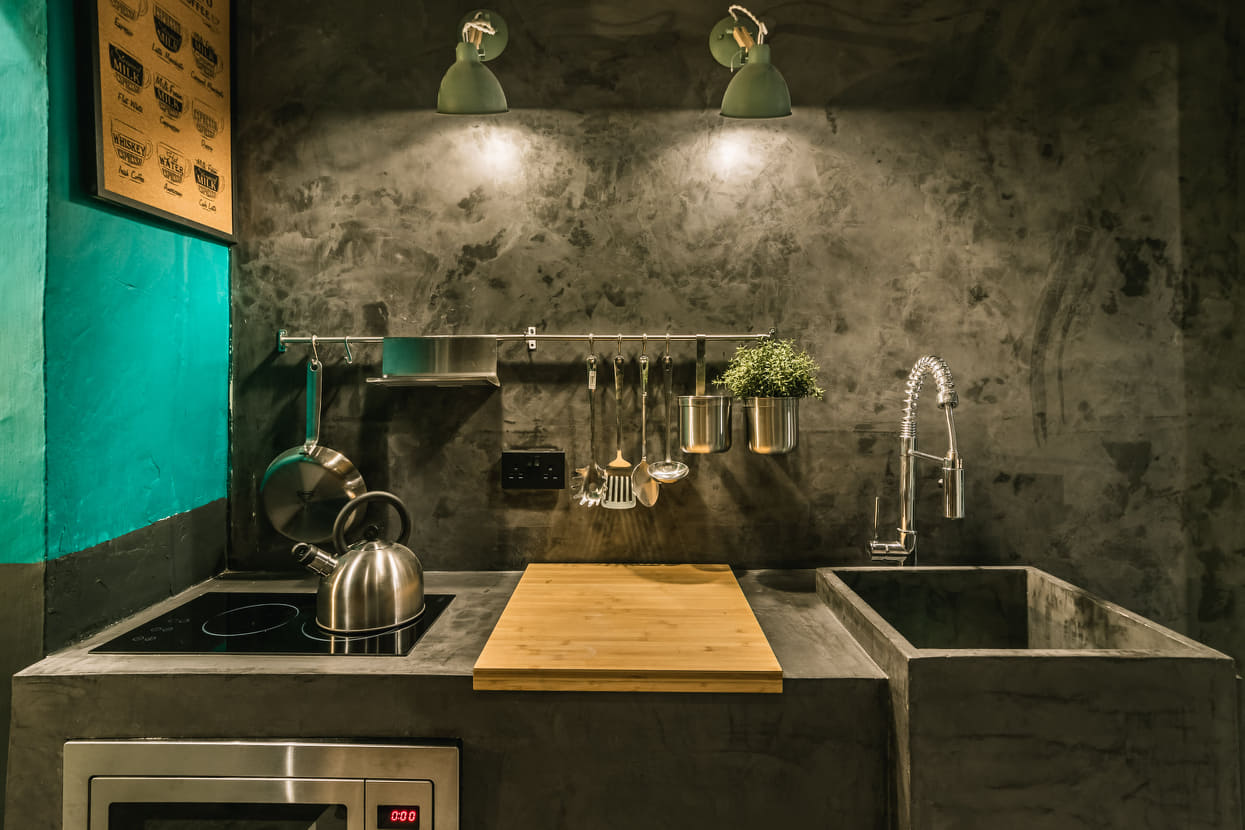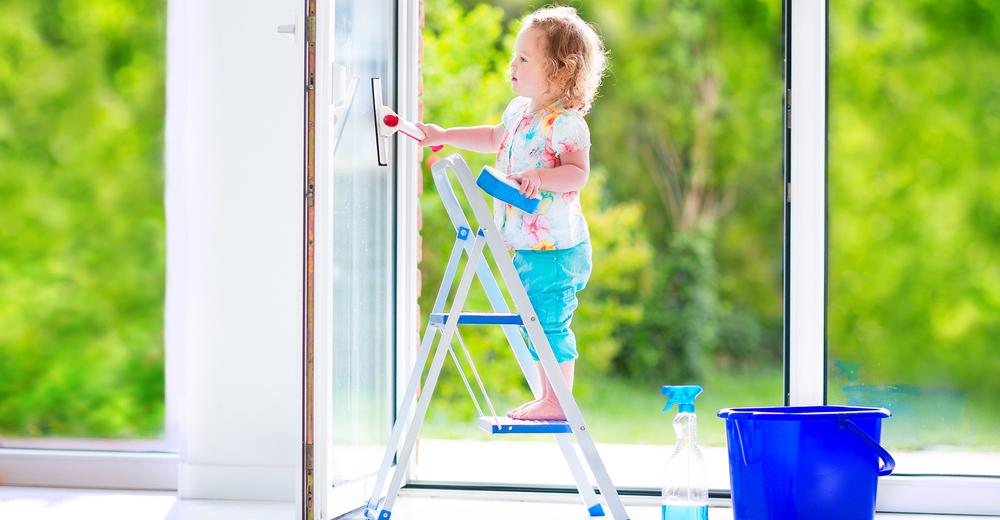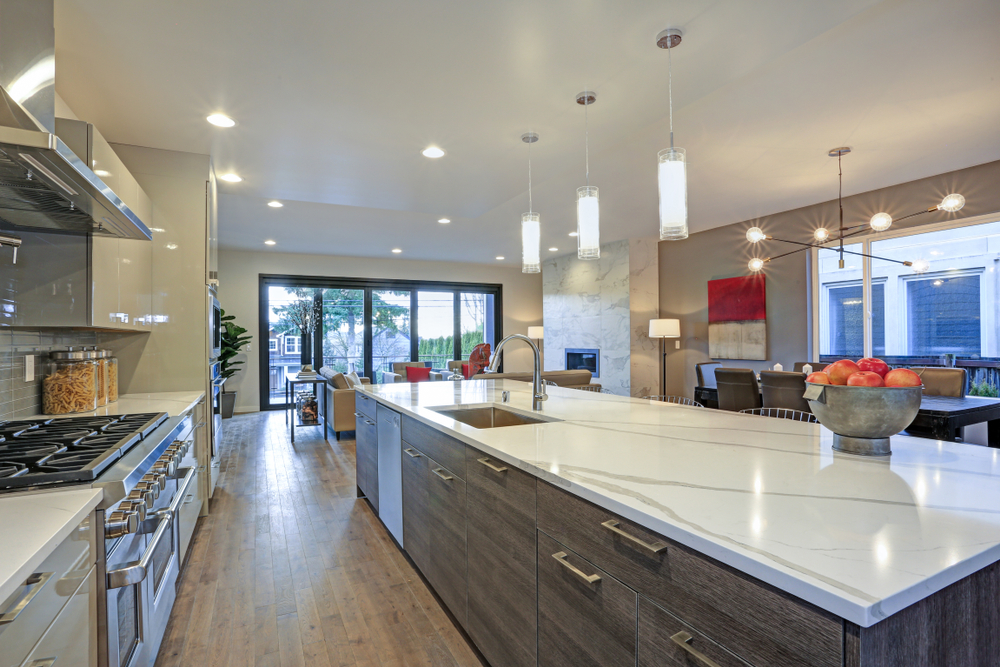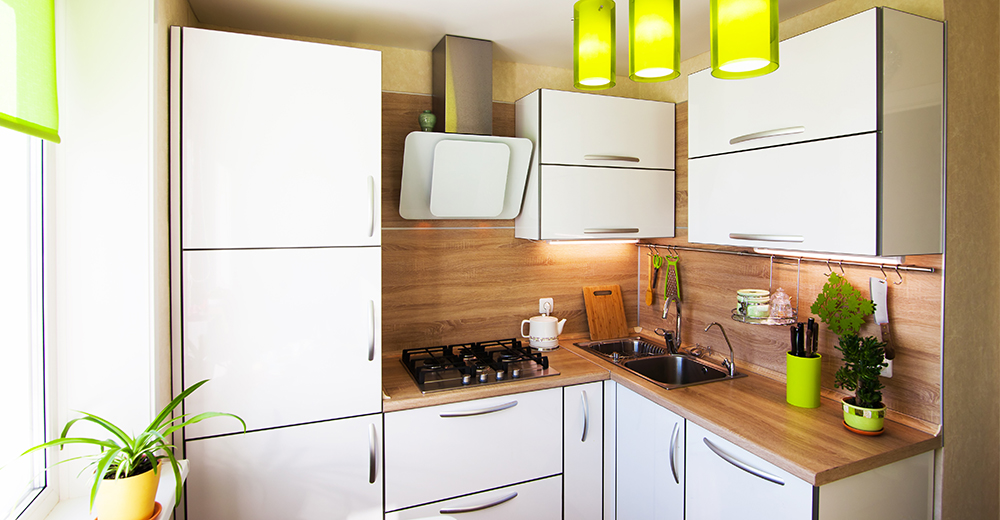It’s not hard to see the benefits to working from home: Imagine not having to deal with Malta’s traffic jams every morning (or worse, having to ride the bus!), the freedom to choose the environment you work in, and no noisy co-workers. But success comes with conditions: You need an iron will to stave off distractions, and to get yourself super organised.
Anyone who’s familiar to the office life will tell you: productivity is shaped by your surroundings. This will ring true especially if you’re artistically inclined or need to do creative work, but if your work is in accountancy or development, then you’ll also know that writing code and drafting statements are much easier to do in a distraction-free place that lets you concentrate.
A homey café with WIFI is a great place to work in from time to time, but it’s not a feasible option if you want to minimise your expenses. We’ve looked at what graphic designers, psychologists, and research on productivity advise when it comes to creating your own home office.
1. Separate your home office from the rest of the house
It’s hard for domestic life to intrude into your professional one when you work in an office – when your workplace is in your own home, that just gets harder. A sharp divide between ‘work’ and ‘play’ is necessary, so try to find a spot (hopefully, a room) in your house that minimises distractions from family, pets, TV, and all the other goings-on at home that call out for your attention.
It’s not ideal, but if what your budget allows is a second-hand desk in the corner of your living room, then go for it! Many successful business people have started from less. Remember: Physical boundaries are helpful, even a curtain can do the trick. Nevertheless, your goal should be a space large enough to operate every facet of your business, working out of two or three separate areas of the home is far less productive than working from one area.
2. Inject into your office colours that help you stay efficient
Whether the room is dedicated to the office or also happens to be the dining room, consider that repainting your walls can help tremendously. The colours we see and are surrounded by influence our mood and behaviour. According to Angela Wright’s book on colour psychology, Colour Affects System, blues are best to go for if you do work that requires sustained concentration, such as accountancy or coding; yellow is best for more creative lines of work, such as writing or design, and red is the go for if your work requires physical activity. You don’t have to pick one, combining colours always work well.
Stay away from grey, white, and beige.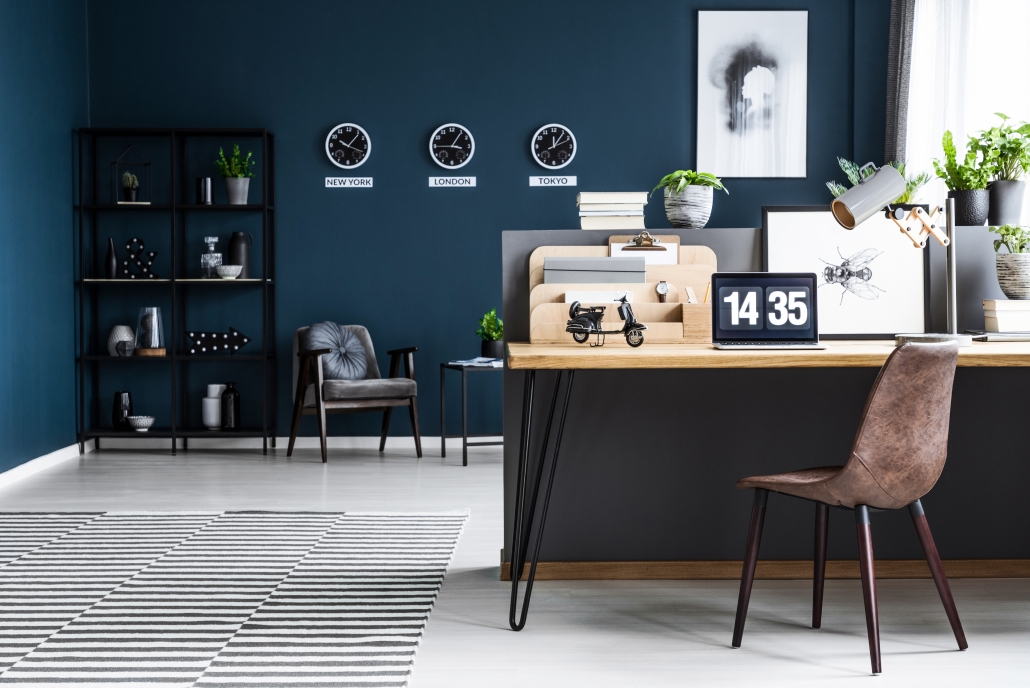
3. Take care of your back by buying an ergonomic chair
You might want to stand up for this: the main ingredient to becoming the archetypical caricature of the crooked old man is sitting a lot. Right now, the average adult spends 50-70% of the day sitting at work. The rest of the day doesn’t tend to include a lot of activity either -usually involving sitting by the dinner table, and then on the sofa watching Netflix shows. Investing in an ergonomic chair might be the most important ‘expensive’ investment you can make, so take this seriously. If you can’t invest in one from the get-go, keep the basics in mind. When working at a computer, your elbows should be at right angles and the screen roughly at eye level so your body is properly aligned, rather than slouched over your laptop or workstation in the “turtle pose.”
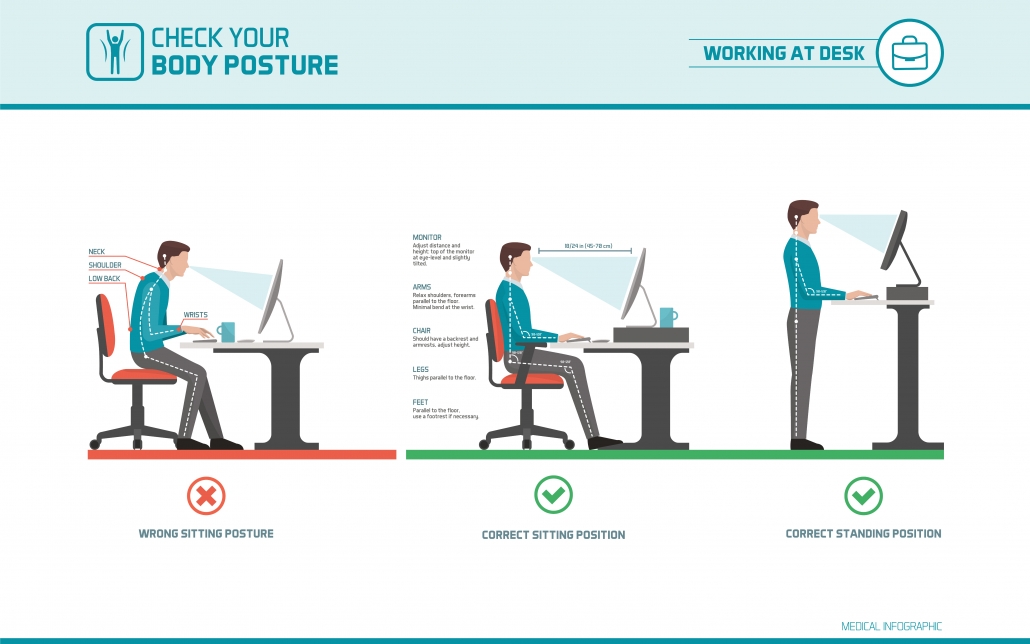
4. Maximise the amount of natural light your workspace is exposed to
Allowing as much natural light as possible into your workspace decreases eye fatigue, headaches, and significantly increases productivity. It’s also good for your mental health in general. A slew of studies show that more natural light sees a drastic boost in productivity, and the rise of the office with floor-to-ceiling windows is a testament to just how important this is.
It’s simple: If you have the flexibility of choosing where to work in your house, pick the largest window with the nicest view. Mirrors also work wonders to bounce off sunlight in your room – especially if you have them facing the window.
P.S: If you read our article on making a small space feel bigger, then you know that getting a big lamp will be both helpful and aesthetically appealing. Don’t just leave your ceiling bulb as your main source of light, get a powerful desk lamp.
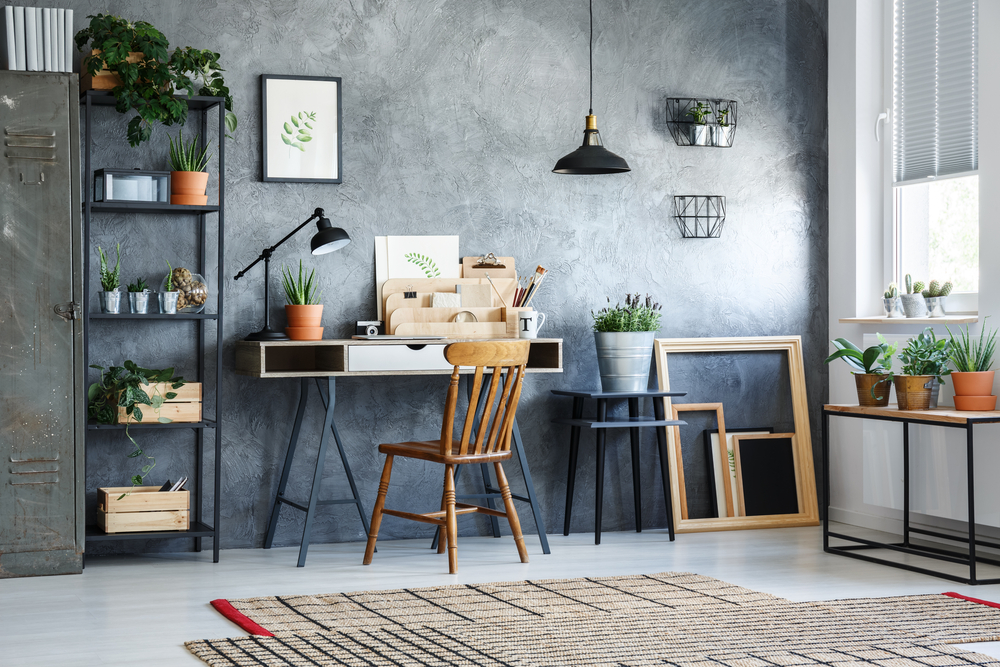
5. Green your office up
The deterioration of indoor air quality by harmful chemicals, dust particles from outside, and other materials can be up to 10 times worse than outdoor air pollution; fortunately, growing plants is an inexpensive and attractive solution. Take a look at our article on NASA-backed plants you should add to your office.
In addition, a number of studies have shown that exposure to nature and greenery alleviates stress, promotes happiness, and increases productivity. So if you have a view, turn your desk toward the window: looking at rural areas actually calms our brain down.
P.S: A little bit more on colour theory: Green is the colour the promotes balance, and plants is a great way to introduce it into your room!
6. Embrace the 21st Century: Invest in automation and gadgets
The ability to alter the intensity (or even colour!) of the light in your room, turn on or off the music, or adjust the temperature is worth investing and usually not too expensive. Look up different gadgets and devices you can add to your home office to make your workflow smoother, easier, and less prone to annoying interruptions. Adjusting the conditions of your room according to what makes you comfortable reduces the chances that you get distracted from what you’re doing, so it is worth looking into.
P.S: Before buying a brand new monitor or other devices, look at Maltapark!
7. Turn your home office into your own little sanctuary with items that inspire you
Think about the people in your industry whose paths you’d like to follow, tokens or mementoes from past achievements like certificates, and ideas or texts that you resonate with, be it a quote or a book – anything that helps you get in the right headspace to work at your best.

